
Table of Contents
ToggleIntroduction
The Taj Mahal celebrated as The Most Amazing Place in the World, here is an architectural marvel located in Agra, India, that is well-known for both its beauty and its rich history. The magnificent white marble dome of this famous monument, which was erected by the Mughal Emperor Shah Jahan in memory of his adored wife Mumtaz Mahal amid verdant gardens, is a symbol of love and creative genius. This guide examines the Taj Mahal’s legendary status, provides advice on how to get there, and identifies more outstanding Indian attractions to make the most of your trip.
Brilliant Architecture
Style and Organization
Here, which seamlessly blends aspects of Persian, Islamic, and Indian architecture, is a monument to the architectural genius of the Mughal era. Four minarets, each elaborately adorned with geometric designs and calligraphy, flank the central dome, which rises magnificently from spotless white marble. Here marble, which comes from Rajasthan, has intricate semi-precious stone inlay work using a process called pietra dura. Here is more than simply a monument—it’s a living, breathing example of Mughal architectural innovation, thanks to its magnificent craftsmanship.
Water Features and Gardens
Large garden, which is split into four quadrants by water channels, complements its symmetrical design. The garden itself is painstakingly planned to balance the magnificence of the mausoleum, and these waterways represent the four rivers of paradise as mentioned in the Quran. Here, the magnificent exterior is reflected in the garden’s reflecting pools, producing an amazing visual impression. The monument’s majesty is further emphasized by the reflected water features and rich vegetation, which helps explain why it is known as The Most Amazing Place in the World.
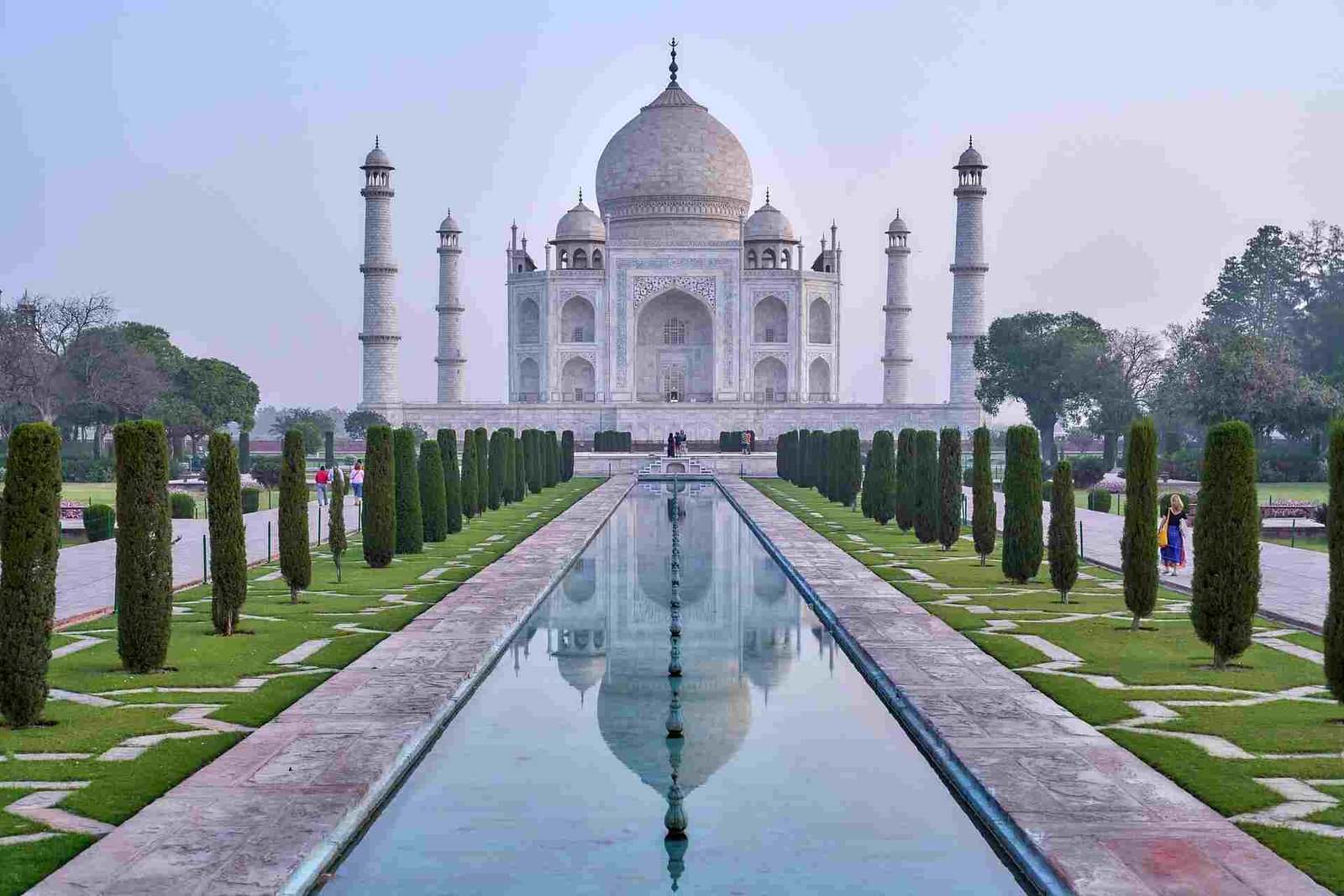
Important Travel Advice
Ideal Times to Visit
It is preferable to schedule your visit during the cooler months of October through March in order to fully appreciate the magnificence of the place. With temperatures between 10°C and 25°C (50°F and 77°F), this time of year offers more agreeable weather, which is perfect for sightseeing. The Taj Mahal is open from sunrise to sunset, but for a more tranquil and uncrowded experience, go there early in the morning. Consider going with the full moon to see the marble dome shimmer in the moonlight, which adds a magical touch to the visit and makes for an amazing vista.
What to Pack and Wear
Expect to undergo a security check in entry. Food, beverages, and large luggage are not allowed within the monument. Because there will be a lot of walking involved, comfortable footwear is recommended. Additionally, since the place is a site of veneration, observing the principles of silence and decorum is essential. The history and architectural aspects of the place can be better understood by hiring an experienced guide, who can also give you a greater understanding of why this location is known as The Most Amazing Place in the World.
Examining the Cultural Context
Historical Importance
In addition to being a work of architectural art, the Taj Mahal is a moving representation of unending love. Shah Jahan ordered it in remembrance of Mumtaz Mahal, his late wife, who passed away during giving birth. This intimate tale gives the monument emotional depth, transforming it from a merely imposing construction into a moving memorial to love and grief. Knowing this history enhances the Taj Mahal’s experience and emphasizes why it is referred described as The Most Amazing Place in the World.
Worldwide impact
The Taj Mahal’s influence goes beyond its aesthetic appeal. It is a global inspiration to innumerable poets, writers, and painters. Its prominence as a universal cultural emblem is further cemented by its appearance in literature and film. Acknowledging the Taj Mahal’s impact on other artistic and media mediums improves the understanding of its importance and reinforces its moniker as The Most Amazing Place in the World.
Attractions Close by to Enhance Your Visit
Agra Fort
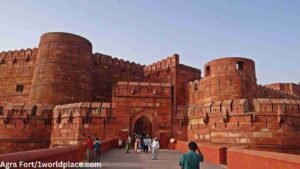
A nearby UNESCO World Heritage Site called Agra Fort is worth seeing in addition to the Taj Mahal. The capital home of the Mughal rulers was originally this vast red sandstone castle. Well worth including on your schedule, its striking architecture and historical significance offer a deeper insight of Mughal history and culture.
The grave of Itimad-ud-Daulah
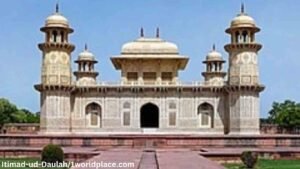
The Baby Taj, also known as the Tomb of Itimad-ud-Daulah, is another notable nearby landmark that is definitely worth seeing. Built for Mirza Ghiyas Beg, the father of Empress Nur Jahan, this mausoleum displays superb marble craftsmanship and provides insight into the evolution of Mughal architecture, which in turn gave rise to the Taj Mahal. Its beautiful architecture and serene surroundings offer a great contrast to the Taj Mahal’s extravagance.
Mehtab Bagh

Mehtab Bagh is a great option for expansive views of the Taj Mahal. Beautiful views may be seen from this garden complex, which is across the Yamuna River from the Taj Mahal, especially at sunset. It’s the ideal place for contemplation and photography because of the serene environment and gorgeous surroundings.
Fatehpur Sikri
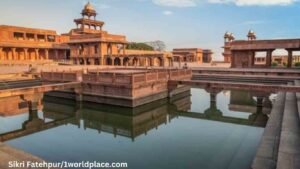
It’s strongly suggested to take a day excursion to Fatehpur Sikri, which is roughly 40 kilometers from Agra. This historic Mughal capital, which includes the Buland Darwaza and the Jama Masjid, has been kept to a high standard and is recognized as a UNESCO World Heritage Site. The historical importance and exquisite architecture of Fatehpur Sikri give the Mughal era a more comprehensive background, which improves your comprehension of the time.
The Vrindavan
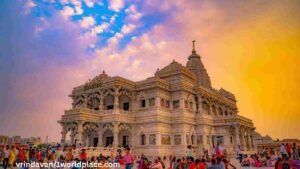
Situated roughly 60 kilometers away from Agra, Vrindavan is a prominent pilgrimage destination with an extensive spiritual legacy. Vrindavan, well-known for its temples devoted to Lord Krishna, provides a distinctive religious and cultural experience. Its lively environment and hallowed locations provide your holiday plan a spiritual touch.
Delhi
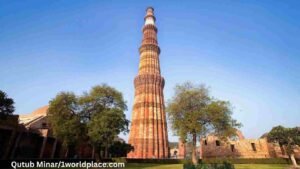
Delhi, the nation’s capital, is a great addition to your travel itinerary. The Red Fort, Qutub Minar, and India Gate are just a few of the city’s many historical and cultural landmarks. The Taj Mahal tour is enhanced by Delhi’s many offerings, which present a thorough picture of India’s past.
The efforts of conservation and preservation
A major issue in maintaining the Taj Mahal’s immaculate state is the impact of tourists and environmental variables. To preserve the monument’s visual attractiveness and structural integrity, numerous conservation initiatives have been put in place. The Taj Mahal must be regularly cleaned, air quality must be monitored, and pollution must be controlled. These initiatives are managed by the Archaeological Survey of India (ASI), which makes sure the Taj Mahal continues to be a representation of timeless beauty and historical relevance.
In conclusion
Symbolic Significance
In conclusion, the Taj Mahal is a striking symbol of love and artistic brilliance. Because of its breathtaking beauty, emotional significance, and superb craftsmanship, it has been dubbed “The Most Amazing Place in the World.” In addition to providing tourists with a wealth of historical and cultural context, this architectural wonder offers an unmatched chance to see one of the greatest works of human imagination.
Taking in the Monument
A trip to the Taj Mahal enables one to appreciate this famous structure on a deeper level. Its historical background can be better understood by visiting and taking in the surrounding sights, as well as the ongoing restoration work. The Taj Mahal is still a must-see location for people who want to witness one of the most amazing architectural and emotional achievements; its timeless beauty and majesty serve as monuments to human ingenuity and unfailing love.
